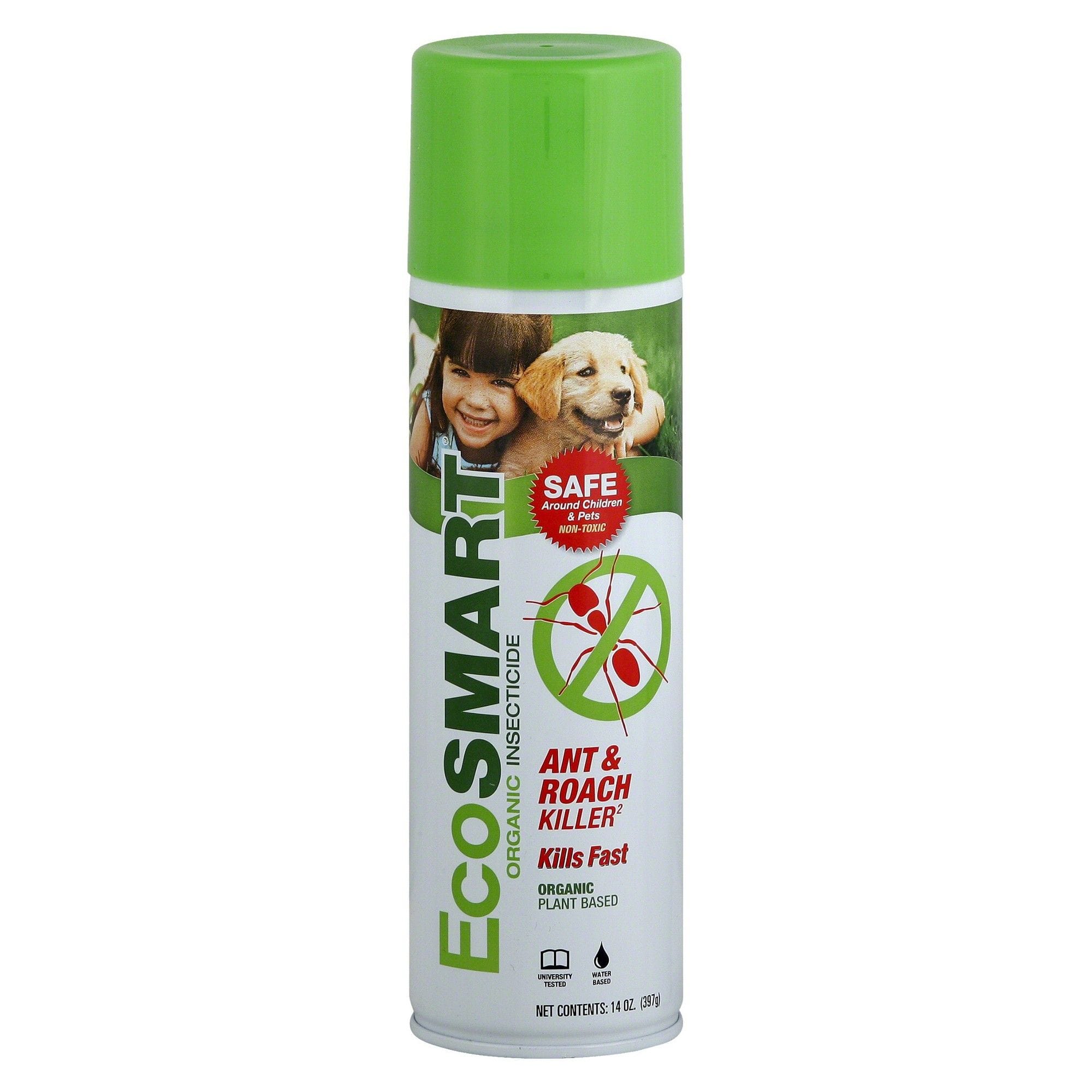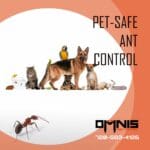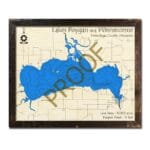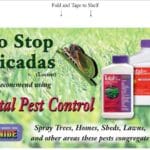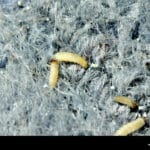Ants in your home can be a nuisance, especially when you have pets. This guide provides safe and effective ant control solutions, protecting both your home and your furry friends.
Choosing the Right Ant Control: Safeguarding Your Pets
Protecting your pets while eliminating ants requires careful product selection. This section explores various pet-safe ant control methods, offering insights into their effectiveness and suitability for different situations.
Pet-Safe Ant Control Methods: A Comprehensive Overview
Just like choosing the right tool for a job, selecting the appropriate ant control method is crucial. Here’s a breakdown of pet-safe options:
1. Bait Stations: The Discreet Eliminator
Bait stations contain a sweet, insecticide-laced bait that attracts ants. The ants carry the bait back to the colony, sharing it and effectively eliminating the infestation from the source. Opt for tamper-proof bait stations to prevent curious pets from accessing the insecticide. Terro offers several tamper-proof options.
2. Ant Gels: Targeted Application for Effective Control
Ant gels offer a similar approach to bait stations, providing a tempting food source mixed with insecticide. Ants consume the gel and return to the nest, spreading the insecticide throughout the colony. Advion is a popular choice for its efficacy.
3. Borate Baits: The Natural, Slower-Acting Solution
Borate baits utilize borax, a naturally occurring mineral, as an insecticide. Generally safer for pets and children, these baits may take longer to eliminate the ant colony. Terro also offers borax-based bait options.
4. Pet-Safe Sprays: Creating a Protective Barrier
Pet-safe sprays create an invisible barrier that repels ants. Ensure pets are kept away during application and until the spray dries completely. Always follow label instructions meticulously.
5. Natural Remedies: DIY Ant Deterrents
Natural solutions like vinegar and water mixtures or essential oils such as peppermint can deter ants. While effective for minor infestations, their efficacy against larger infestations is limited. Mix equal parts white vinegar and water in a spray bottle. For essential oils, dilute a few drops of peppermint oil in water and spray in ant-prone areas. Caution: Certain essential oils, like tea tree oil, can be toxic to pets, especially cats. Consult your veterinarian before using essential oils around pets.
Selecting the Best Strategy: A Tailored Approach
The ideal ant control method depends on several factors:
Infestation Severity: Minor infestations may respond well to natural remedies, while larger infestations might require stronger solutions.
Ant Location: Bait stations and gels are ideal for indoor use, while sprays can be used both indoors and outdoors.
Pet Type: Some pets are more sensitive than others. Consider your pet’s age, size, and breed when selecting a product. Consult your veterinarian if you have concerns.
| Factor | Consideration |
|---|---|
| Severity of Infestation | Natural remedies for minor infestations; stronger solutions for larger problems. |
| Location of Ant Activity | Baits/gels for indoors; sprays for both indoors and outdoors. |
| Type of Pets | Consider pet sensitivities and consult your vet if needed. |
Safe Application: Protecting Your Pets
Even with pet-safe products, precautions are essential:
Pet Evacuation: Keep pets away from treated areas until the product is dry or as directed on the label.
Ventilation: Ensure adequate ventilation after applying any insecticide.
Secure Storage: Store all ant control products out of reach of pets.
Emergency Contact: Have your veterinarian’s number and the ASPCA Animal Poison Control Center (888-426-4435) readily available. If your pet ingests or comes into contact with insecticide, contact them immediately.
Finding the Safest Ant Killer for Your Pets
Balancing effective ant control with pet safety is crucial. This section delves into various options, highlighting their safety profiles and efficacy.
Balancing Act: Effective Control & Pet Well-being
Choosing an ant killer requires careful consideration of your pet’s habits, age, and size. Curious pets require extra precautions. Look for products labeled “pet-friendly,” “non-toxic,” or “child-safe.” Ingredients like boric acid and fipronil are generally considered safe when used correctly. However, always follow label instructions precisely.
Natural Alternatives: Leveraging Nature’s Power
Diatomaceous earth, a powder made from fossilized algae, dehydrates ants and is generally considered safe for pets. Vinegar and water solutions disrupt ant scent trails, acting as a deterrent. While natural approaches are less likely to harm pets, their efficacy may vary.
Safety First: Essential Precautions
Regardless of the chosen method, these precautions are crucial:
Isolate Treated Areas: Keep pets away from treated areas until the product dries or as indicated on the label.
Secure Storage: Store ant killers out of pets’ reach, preferably in a locked cabinet.
Emergency Preparedness: Have emergency contact information readily accessible. Contact your veterinarian or the ASPCA Animal Poison Control Center immediately if your pet ingests ant killer.
| Potential Hazard | Precautionary Measure |
|---|---|
| Ingestion | Keep pets away; secure storage |
| Contact | Restrict access until dry; wipe paws |
| Inhalation | Ventilate the area; keep pets away during application |
Professional Pest Control: When to Seek Expert Help
For severe infestations or if DIY methods prove ineffective, consult a professional pest control service. Inform them about your pets so they can select appropriate products and methods.
Ongoing Research: Staying Informed
Pest control research constantly evolves. Stay updated on the latest recommendations from reputable sources like the ASPCA.
Navigating Uncertainty: Tailored Advice
The “safest” option depends on various factors. Consult your veterinarian or a pest control professional for personalized advice.
Dog-Friendly Ant Killers: Protecting Your Canine Companion
Ant control with dogs requires specific considerations. This section guides you through selecting and using dog-friendly ant killers, prioritizing your dog’s safety.
Safeguarding Your Dog: Choosing the Right Product
Ingredients like boric acid, fipronil, and deltamethrin are generally safe for dogs when used as directed. Avoid dusts and powders, as these pose inhalation risks. Baits are a safer option, attracting ants while minimizing pet exposure.
Responsible Application: A Cautious Approach
Always follow label instructions meticulously. Apply products in areas inaccessible to your dog. Place bait stations out of reach and consider your dog’s habits when selecting locations. Wash hands after handling bait stations and ensure surfaces are clean before allowing your dog access.
| Ant Control Method | Dog-Friendly? | Notes |
|---|---|---|
| Boric Acid Baits | Generally safe | Keep out of reach |
| Fipronil Baits | Generally safe | Follow label instructions |
| Deltamethrin Baits | Generally safe | Monitor dog after application |
| Ant Dusts/Powders | Use with extreme caution | Inhalation risk; avoid if possible |
| Sprays containing Permethrin | Toxic to cats and some dog breeds | Avoid entirely if you have pets, including dogs. |
Product Recommendations: Trusted Brands
Terro, Advion, and specific pet-safe formulations from Raid are examples of dog-friendly ant killers. Always follow product instructions carefully.
Emergency Response: Veterinary Care
If your dog ingests ant killer, contact your veterinarian immediately.
If you’re tired of armadillos digging up your yard, click here for our guide on armadillo repellent.
Preventive Measures: Proactive Ant Control
Prevent infestations by sealing cracks, storing food in airtight containers, and cleaning spills promptly.
Staying Informed: Veterinary Guidance
Consult your veterinarian for the latest recommendations on dog-safe ant control.
Is Ant Out Spray Safe for Pets?
Ant Out, containing permethrin, is effective against ants but poses risks to certain pets. This section clarifies its safety profile and offers alternatives.
Permethrin and Pets: Understanding the Risks
Permethrin, while generally safe for humans and dogs, is highly toxic to cats, rabbits, and fish. Cats are particularly vulnerable as their bodies cannot metabolize permethrin effectively.
Cat Owners: Avoid Ant Out
Do not use Ant Out around cats. Explore alternative cat-safe ant control methods. Your veterinarian can provide tailored recommendations.
Dog Owners: Proceed with Caution
Ant Out is likely safe for dogs when used as directed. However, keep dogs away from treated areas until dry. Consult your veterinarian if your dog has sensitivities or health conditions. If your dog is exposed to permethrin, symptoms might include drooling, tremors, or vomiting. Seek veterinary help immediatel if you suspect permethrin poisoning.
Other Pets: Exercise Caution
Avoid Ant Out around birds, reptiles, and fish. Consult a veterinarian or specialist for safe pest control options for these pets.
| Pet | Safety Level | Notes |
|---|---|---|
| Dogs | Likely safe | Use caution; keep away until dry; consult vet |
| Cats | Unsafe | Do not use |
| Rabbits | Unsafe | Highly toxic |
| Fish | Unsafe | Toxic to aquatic life |
| Birds | Use caution | Consult an avian vet |
| Reptiles | Use caution | Consult a reptile specialist |
Ongoing Research and Evolving Knowledge
Research on permethrin’s effects is ongoing. Stay informed about the latest findings and recommendations. If you’re wondering if deer eat peonies, click here for more information: do deer eat peonies.
Prioritizing Pet Safety: A Cautious Approach
Pet safety is paramount. Consult your veterinarian for personalized advice and always err on the side of caution.
- China II Review: Delicious Food & Speedy Service - April 17, 2025
- Understand Virginia’s Flag: History & Debate - April 17, 2025
- Explore Long Island’s Map: Unique Regions & Insights - April 17, 2025
